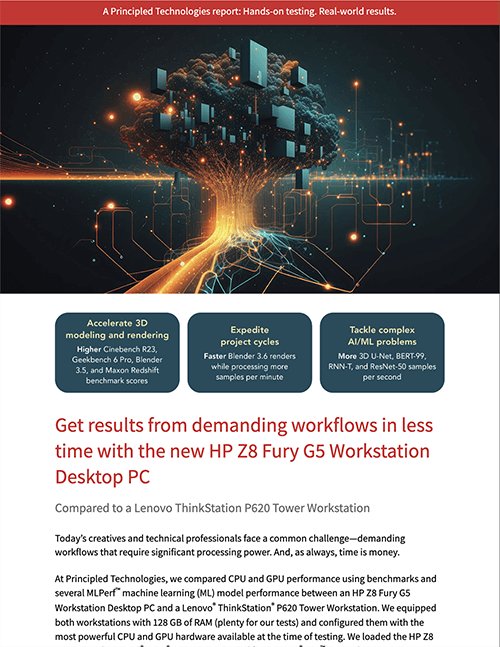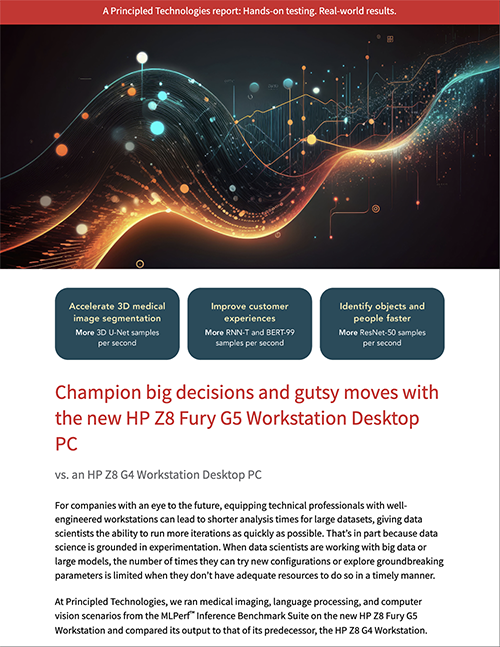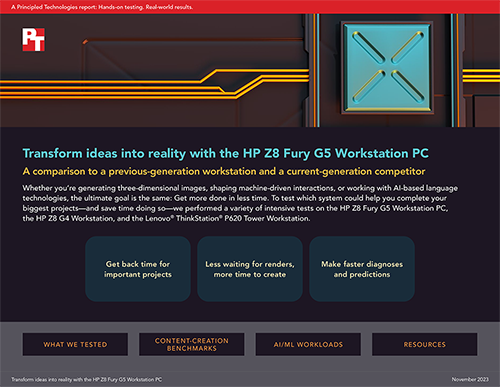
Today’s technical and creative pathfinders are harnessing the power of big data to expand the limits of human understanding and imagination. From business to medicine to entertainment, groundbreaking insights and jaw-dropping content are steadily revolutionizing the ways we live and interact with the world. The key that opens the door to this world of data-driven innovation is access to extraordinary computing power. The right high-powered workstation can enable innovators to tackle resource-intensive tasks with confidence, potentially clearing a path to explore new ideas or take on more projects. Less-capable gear can create frustrating bottlenecks for creative flows and productivity. Objective workstation performance data can help modern pioneers choose hardware that will serve them well as they blaze a trail into the future.
We used a variety of demanding CPU- and GPU-intensive benchmark workloads to compare the performance of three powerful workstations: the new HP Z8 Fury G5 Workstation equipped with an Intel Xeon w9-3495X processor, a Lenovo ThinkStation P620 equipped with an AMD Ryzen Threadripper PRO 5995WX processor, and a previous-gen HP Z8 G4 Workstation equipped with an Intel Xeon Gold 6258R processor. Across all our comparison tests—from single- and multi-core performance to augmented reality to GPU-assisted rendering and acceleration and more—the new Z8 Fury G5 significantly outperformed both the Lenovo and Z8 G4 systems.
Our results show that choosing the Z8 Fury G5 over the ThinkStation P620 or the Z8 G4 can provide a serious performance advantage when handling demanding workloads and complex datasets. That type of computing edge can provide today’s digital explorers with the confidence and resource bandwidth they need to forge ahead in the innovation age.
To see more about our HP Z8 Fury G5 evaluation tests, check out the reports and interactive PDF below.
Principled Technologies is more than a name: Those two words power all we do. Our principles are our north star, determining the way we work with you, treat our staff, and run our business. And in every area, technologies drive our business, inspire us to innovate, and remind us that new approaches are always possible.








